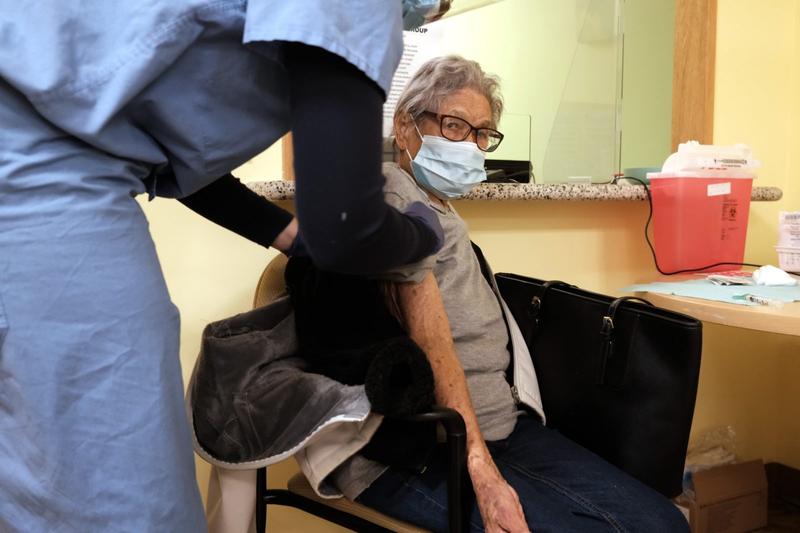Hidden Helpers: Unpaid Caregivers And The Pandemic

Over 50 million Americans currently serve as unpaid caregivers for adult family members or friends, according to a 2020 estimate from AARP.
And as baby boomers continue to age, that number is only going to increase.
But caring for elderly loved ones is only becoming more complicated. The COVID-19 pandemic has put seniors and those working in and around them at serious risk. And insurance rarely covers all expenses necessary for comprehensive care.
Kate Washington became an unpaid caregiver for her husband, Brad, and wrote about her experience in The New York Times:
I became painfully familiar with caregiving’s challenges during Brad’s months of chemo in 2015, but it was his 2016 stem-cell transplant — a last-ditch treatment for relapsed cancer — that showed me just how broken our system is. When he was discharged, he was immunocompromised, blind, too weak to walk unassisted, and unable to eat more than half his calories.
“He’ll need attendance 24 hours a day,” his oncologist told me. I stared, panic rising.
“How am I supposed to do that? We have two kids,” I said. Even meeting our family’s most basic needs would be impossible.
“Well, usually family steps in, and it works out fine,” the doctor replied, waving away my concerns. Our family had been extremely supportive but couldn’t drop everything indefinitely. A nurse suggested organizing shifts of friends, but my friends, like me, were working parents.
Why has the number of unpaid caregivers increased so dramatically? And what can be done to support them?
Unpaid caregiving is very difficult work. If you or someone you know is struggling with mental health or a substance use disorder, you can call the SAMSHA National Helpline: 1-800-662-HELP. It’s confidential, free, and available 24 hours a day in English or Spanish.
9(MDEwODYxNTQyMDEzNjAxODk2Nzc2NzNmYQ001))